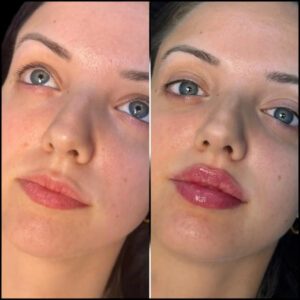
The Impact of Stitch Density on Digitizing for Embroidery Complete Guide
When it comes to digitizing for embroidery, one technical factor that can make or break your design is stitch density. It’s a critical element that determines the appearance, durability, and quality of your embroidery work. Whether you’re a seasoned embroidery digitizer or a beginner looking to refine your skills, understanding stitch density can drastically improve your results.
In this guide, we’ll explore what stitch density is, why it matters, how to choose the right settings, and common mistakes to avoid.
What Is Stitch Density in Embroidery Digitizing?
Stitch density refers to the amount of thread stitches packed within a specific area of the embroidery design. It is usually measured in millimeters (mm) and affects how tightly or loosely the stitches are placed.
-
High stitch density means stitches are closer together, creating a fuller, more solid appearance.
-
Low stitch density means stitches are more spaced out, creating a lighter, softer texture.
Why Stitch Density Matters in Digitizing for Embroidery
The density you choose directly impacts:
-
Thread Coverage – Too low, and fabric may show through; too high, and it may cause thread breakage.
-
Fabric Compatibility – Different fabrics require different densities for the best results.
-
Design Durability – High-density designs can last longer but may be stiffer.
-
Machine Performance – Incorrect density can cause needle wear, thread breaks, and poor stitch quality.
Factors That Affect Stitch Density
When digitizing embroidery designs, stitch density decisions are influenced by several factors:
1. Fabric Type
-
Lightweight fabrics (silk, chiffon) require lower density to avoid puckering.
-
Heavy fabrics (denim, canvas) can handle higher density for strong coverage.
2. Design Size
Smaller designs often require slightly lower density, while larger designs can handle higher density for detail clarity.
3. Thread Type
-
Thicker threads (like 30wt) need lower density.
-
Thinner threads (like 60wt) require higher density for good coverage.
4. Embroidery Purpose
A logo for corporate apparel may need higher density for durability, while decorative embroidery on delicate garments should have lower density for comfort.
Common Problems Caused by Incorrect Stitch Density
Too High Density
-
Fabric puckering
-
Thread breaks
-
Needle wear
-
Stiff and uncomfortable embroidery
Too Low Density
-
Fabric showing through the design
-
Weak durability
-
Uneven color fill
Best Practices for Stitch Density in Embroidery Digitizing
1. Follow Fabric Guidelines
Each fabric type has a recommended stitch density range. For example:
-
Cotton: 0.40 mm
-
Polyester: 0.45 mm
-
Silk: 0.50 mm
2. Test Before Production
Always run a sample to check coverage, texture, and tension.
3. Adjust for Lettering
Small text needs slightly higher density for sharpness, but avoid making it too stiff.
4. Consider Underlay Stitches
Proper underlay reduces the need for excessive density while maintaining coverage.
5. Use Software Tools Wisely
Modern digitizing software (like Wilcom, Hatch, and Pulse) can auto-adjust density, but manual tweaking often gives better results.
How to Adjust Stitch Density in Digitizing Software
Most embroidery digitizing software allows you to set stitch density manually:
-
Select Fill or Satin Stitch Tool
-
Adjust Density Settings (usually in mm; lower number = higher density)
-
Preview Design in simulation mode
-
Run Test Stitch on similar fabric
Case Study: Stitch Density in a Company Logo
A sportswear company wanted a bold logo embroidered on polyester jackets. The original digitized file had a density of 0.35 mm, which caused puckering. By adjusting it to 0.45 mm and adding a proper underlay, the embroidery became smooth, durable, and professional-looking without damaging the fabric.
Stitch Density Guidelines Table
| Fabric Type | Recommended Density (mm) |
|---|---|
| Silk | 0.50 – 0.55 |
| Cotton | 0.40 – 0.45 |
| Denim | 0.35 – 0.40 |
| Polyester | 0.45 – 0.50 |
| Fleece | 0.50 – 0.55 |
The Role of Stitch Density in Professional Embroidery
Stitch density is not just a technical setting—it’s an art and science combined. Skilled digitizers know how to balance density for aesthetics, comfort, and durability. By mastering density adjustments, you can ensure designs look professional on any garment or fabric type.
Conclusion
In digitizing for embroidery, stitch density plays a vital role in determining the final look and feel of your work. From fabric type to thread choice, each factor requires careful consideration to achieve the best results. Whether you’re creating logos, monograms, or decorative designs, getting stitch density right will help you produce embroidery that stands out for all the right reasons.
If you want high-quality digitizing with perfectly optimized stitch density, Emdigitizing offers professional embroidery digitizing services tailored to your specific needs.
FAQs About Stitch Density in Digitizing for Embroidery
Q1: What is the ideal stitch density for embroidery?
The ideal stitch density depends on fabric, thread type, and design complexity. Generally, 0.40–0.45 mm works for most standard fabrics.
Q2: Can high stitch density damage fabric?
Yes. High density can cause puckering, needle damage, and excessive stiffness in delicate fabrics.
Q3: Does stitch density affect production time?
Absolutely. Higher density means more stitches, which increases embroidery time and machine wear.
Q4: Should I always use the same stitch density for all designs?
No. Each design and fabric combination requires customized density settings.
Q5: Which software is best for adjusting stitch density?
Popular options include Wilcom, Hatch, and Pulse, which provide precise density control features.



